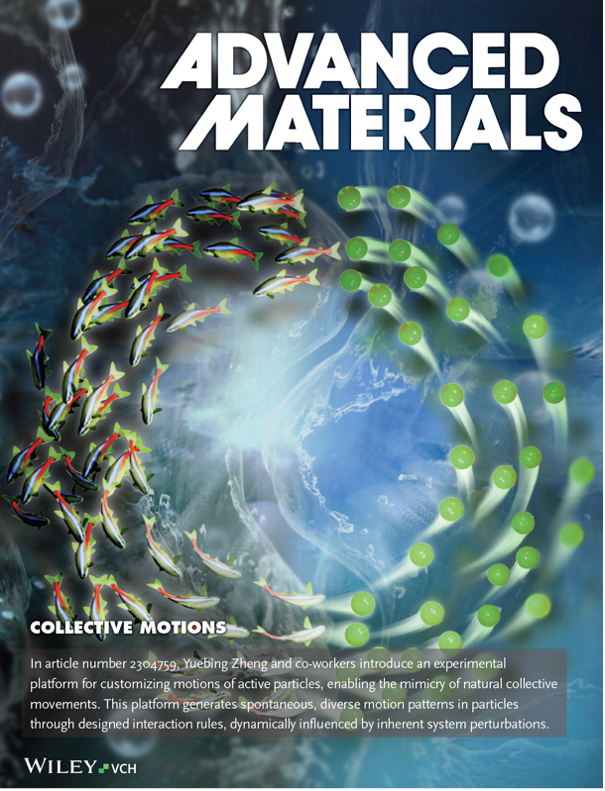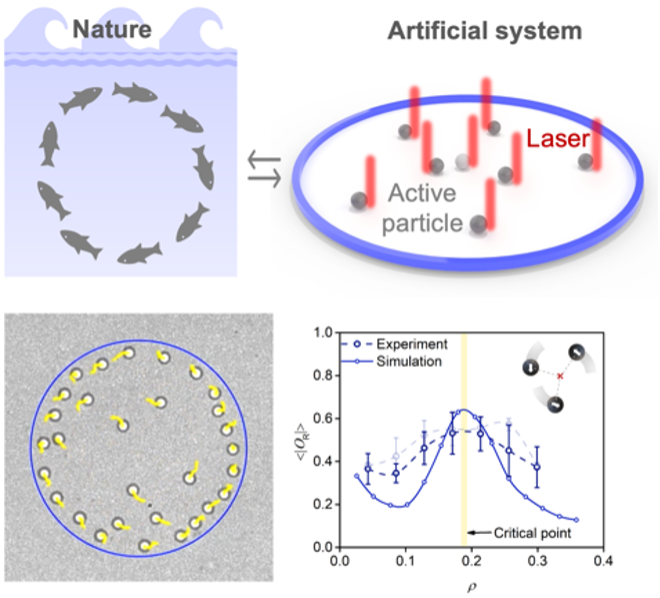In nature, we often see remarkable patterns of movement in groups of animals like fish or birds. These movements are complex and dynamic, involving various behaviors and changes over time. Scientists at UT Austin have been trying to recreate similar behaviors in artificial systems using tiny particles that move on their own.
However, controlling these particles individually to mimic the intricate moments seen in nature has been a challenge. Dr. Yuebing Zheng and Ph.D. students, Zhihan Chen, Hongru Ding, Pavana Kollipara, and Jingang Li, decided to take on this challenge along with other collaborators in the recently published paper in the journal of Advanced Materials. This work was selected as Editor's Choice and featured in the Frontispiece cover image below.

In this study, researchers propose a new system that uses feedback from light to control groups of these active particles and make them move collectively like living organisms. This system allows scientists to study how these particles behave under the Vicsek model, which is a key model of collective motion, in a controlled environment that mimics real-world conditions on a very small scale. They observed that these particles spontaneously formed different patterns of movement and smoothly transitioned between them. They also found the group of particles remained stable even when faced with various disruptions, showing the effectiveness of the Vicsek model in microscopic world.
Overall, this research provides a valuable platform for studying collective motion in nature and developing new technologies in fields like swarm robotics.
Click on the image below to see the video:


